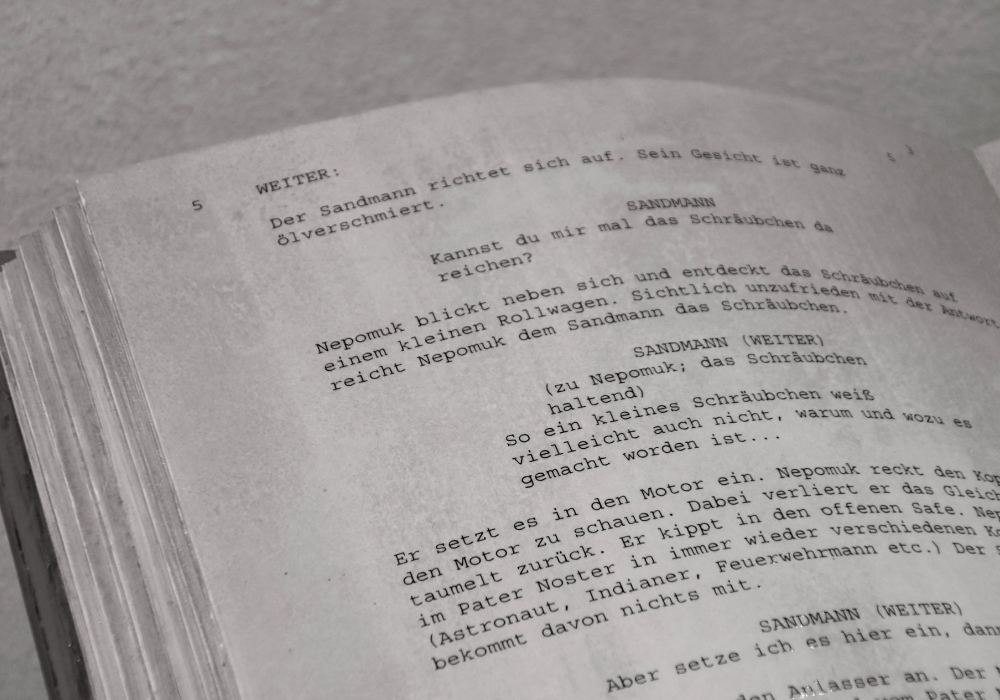What does Pre-Lap Mean in a Script?
Screenwriting is full of a variety of nuances and formatting rules that must be followed for the ease of reading for your audience. As well as to ensure that case and crew know the expectations. Different transitions, cuts, shots and scenes are formatted in different ways. And using various terminology to describe what’s happening on the screen, off the screen, and as dialogue takes place throughout the story. Pre-lap is a term you’ll frequently see used in screenwriting when dialogue or sound effects from an upcoming scene are played just as the next visual scene begins, but what does pre-lap mean in a script and how should it be used?

The term “pre-lap” can be used to blend sound from a prior scene as the next visual scene begins to transition onto the screen.
This, and other forms of formatting or specific references used when screenwriting can assist the reader in understanding just how the dialogue is playing out.
Along with the visual elements of each scene as the storyline progresses. To help you understand how pre-lap is used in screenwriting, we’ve put together a list of basic formatting scenarios below.
What Does Pre-Lap Mean in a Script?
Pre-lapping occurs when dialogue for a scene begins before the actual transition to the next scene takes place.
If you think technically about it, the term “pre” and “lap” makes it pretty simple to understand what’s happening.
Essentially, there is dialogue preceding the scene which is spoken and heard before the actual full transition to the visual elements of the next scene have taken place.
When is Pre-Lap Used in a Script?
The term pre-lap is common enough that a screenwriter can use it in their script if doing so will help to finalize the moment or to deliver an intended joke.
But most of the time decisions such as how to transition a scene. And when to elicit sound during the transition are handled by the post-production team, specifically the editor.
Although the pre-lap is something that will most frequently be incorporated into a film by the post-production team. It’s possible for screenwriters to make the decision to incorporate dialogue.
Or other sound effects into the scripts that they write using this feature particularly for dramatic effects or for comedic impact.

How is the Pre-Lap Formatted in a Script?
In the event that the screenwriter is going to write the pre-lap into the script. It’s included in the slugline next to the name of the character that is speaking.
The pre-lap is a commonly used transitional element that is indicated with parenthesis used next to the character’s name as follows:
JORDAN (PRE-LAP)
Wow, that really looks amazing.
INT. AMELIO’S PIZZA – DAY
Jordan watches Anthony devour a piece of pizza.
JORDAN (CONT’D)
Stupid braces.
Pre-lap may also be used when a particular sound effect is going to be heard as the visuals transition. To format sound effects as a pre-lap rather than dialogue you’ll use the following technique:
JORDAN
I’m sure the weather will be fine for a run.
PRE-LAP: THUNDERCLAPS loudly in the background.
EXT. FRONT PORCH – DAY
Jordan looks up to see the sky pitch black and clouds quickly rolling in.
As you can see, the pre-lap is formatted either by incorporating the designation after the character’s name but before their dialogue.
Or, if the pre-lap is designated prior to a sound effect, it will be specified as a new line item followed by the sound effect description.
Can V.O. Be Used Instead of Pre-Lap?
You might be wondering why you don’t see the term “pre-lap” used as frequently as you see the term V.O. Particularly to indicate sounds that are preformed from off-screen.
Is it okay to use a voice over designation instead of or in place of the pre-lap designation? Are they the same thing?
Pre-Lap
A pre-lap could be incorporated into your screenplay in the form of a V.O. The two, although not the same, can have similar functions when they are used in this sense.
To alert the reader to a sound transition. In which the next scene is beginning prior to the full cut-away from the previous scene.
And therefore the sound you’re hearing is from the next scene and coming in ahead of the actual visuals of the scene.
Terminologies
Similar to pre-lapping, the V.O. description can be used to signify that the voice or dialogue that is being heard is off-screen. And therefore whomever is speaking is not visible at the time.
This is actually more commonly included by a screenwriter than the pre-lap terminology but again, it really depends on the screenwriter.
In Summation
So, what does pre-lap mean in a script and why is it used? The pre-lap designation represents a sound transition.
That can be used to reference when dialogue or a sound effect from an upcoming scene begins playing prior to the full visual transition to that scene occurring.
The audience will begin to hear the audible sounds of the next scene play out. Before the visual elements of the scene fully transition over.
The Takeaway
Screenwriting techniques and formatting for sound transitions like the pre-lap or V.O. are not always incorporated into the script by the screenwriter.
In fact, the decision to transition sound prior to transitioning the visuals to the next scene is a generally up to the editor.
But in instances in which there is greater comedic effect or dramatic impact from the pre-lap? The recommendation or designation might be inferred in the script by the screenwriter.
